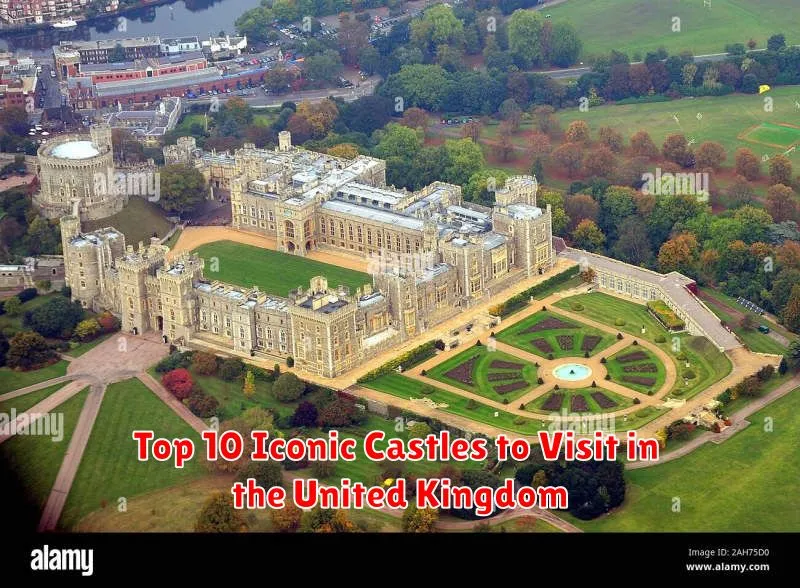The United Kingdom, a land steeped in history and legend, boasts a remarkable collection of castles. These magnificent structures, witnesses to centuries of triumphs and tribulations, stand as iconic symbols of the nation’s rich heritage. From the rugged highlands of Scotland to the rolling hills of England, castles in the United Kingdom offer a glimpse into a bygone era, captivating visitors with their architectural grandeur and the stories they hold. This list of the top 10 iconic castles will guide you on a journey through time, exploring some of the most famous castles and breathtaking fortresses the UK has to offer. Prepare to be enchanted by the history and majesty of these incredible landmarks.
Choosing just ten from the hundreds of historic castles scattered across the United Kingdom is a daunting task, but we’ve curated a selection that represents the diversity and splendor of these iconic castles. This list includes must-see castles, each with its own unique charm and significance. Whether you are fascinated by medieval architecture, royal history, or simply the romantic allure of ancient fortifications, these top 10 castles to visit in the United Kingdom will undoubtedly leave an indelible mark on your memory.
Windsor Castle, England
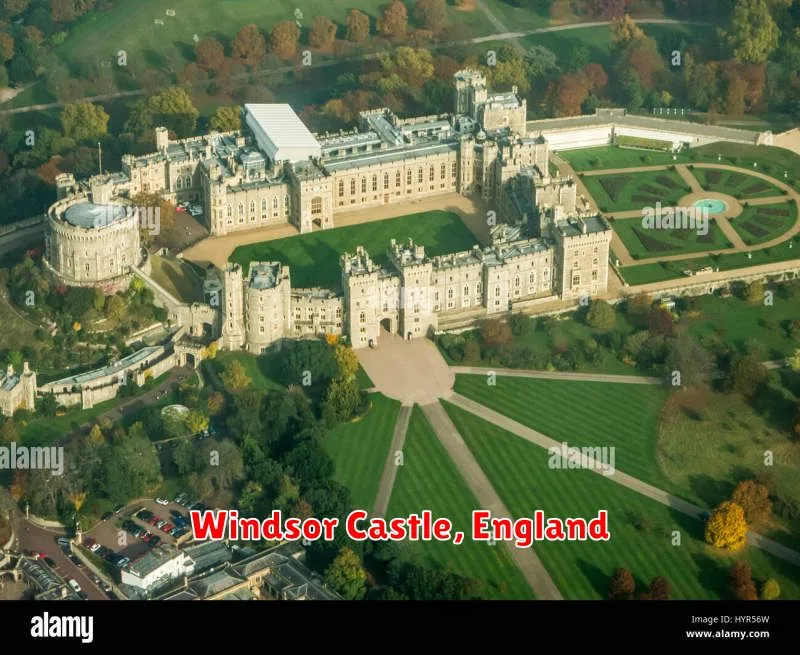
Windsor Castle is the oldest and largest occupied castle in the world. Founded by William the Conqueror in the 11th century, it has served as a royal home for over 900 years.
Located in the historic town of Windsor, the castle boasts magnificent State Apartments showcasing royal history and exquisite art. Visitors can explore St. George’s Chapel, the burial place of several monarchs, including Henry VIII and Queen Elizabeth II. The castle grounds offer stunning views and are a testament to centuries of royal heritage.
Edinburgh Castle, Scotland
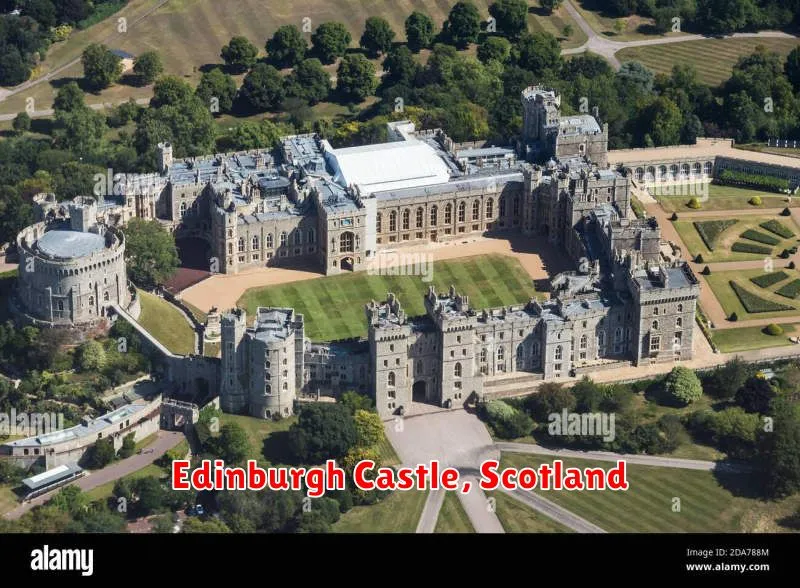
Dominating the Edinburgh skyline, Edinburgh Castle is an instantly recognizable icon of Scotland. Perched atop an extinct volcano, this historic fortress offers breathtaking panoramic views of the city and surrounding landscape.
Its strategic importance has witnessed centuries of battles and sieges, shaping both Scottish and British history. Within its walls, visitors can explore the Scottish Crown Jewels, the Stone of Destiny, and St. Margaret’s Chapel, the oldest surviving building in Edinburgh.
Experiencing Edinburgh Castle offers a captivating glimpse into Scotland’s rich heritage and its enduring spirit.
Bamburgh Castle, England
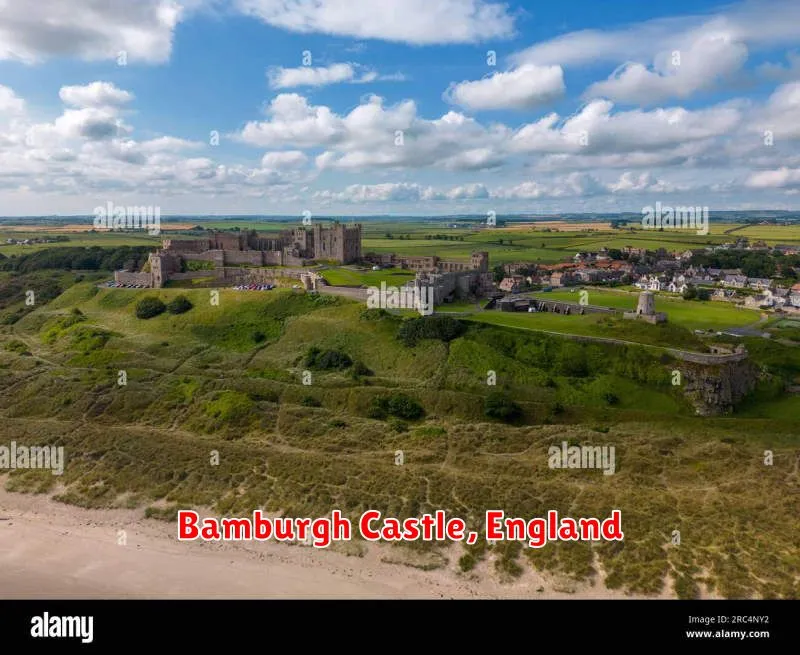
Perched dramatically on a volcanic crag overlooking the Northumberland coast, Bamburgh Castle is an imposing fortress with a rich history. Its strategic location has made it a key player in numerous historical events, witnessing both Viking raids and border conflicts.
Today, visitors can explore the castle’s extensive grounds and state rooms, experiencing its evolution from an Anglo-Saxon stronghold to a magnificent coastal fortress. The archaeological museum offers insights into the site’s fascinating past, showcasing artifacts discovered within the castle walls.
Caernarfon Castle, Wales
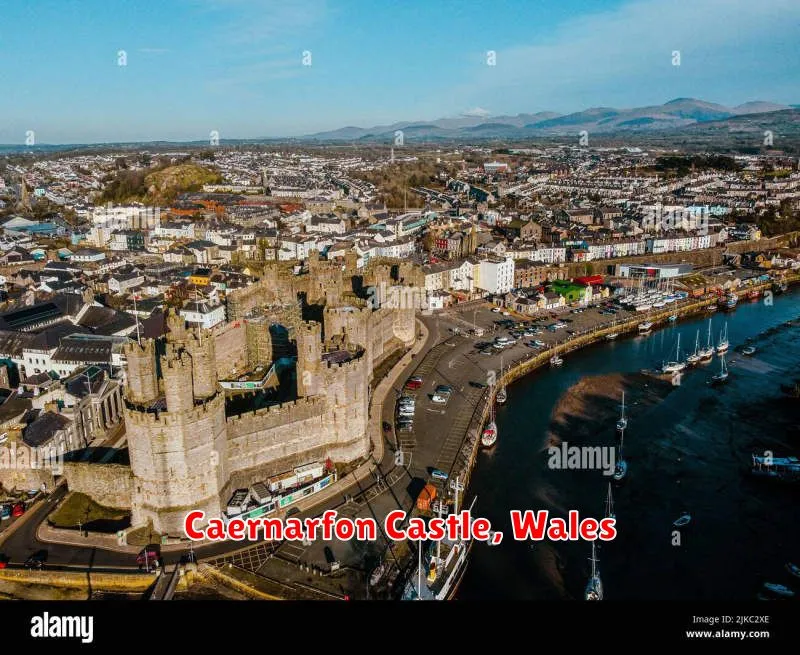
Located in the town of Caernarfon, Gwynedd, North Wales, this imposing medieval fortress stands as a testament to King Edward I’s ambition and dominance. Constructed in the late 13th and early 14th centuries, it’s a designated UNESCO World Heritage Site, a recognition of its historical and architectural significance.
Caernarfon Castle’s polygonal towers and massive curtain walls set it apart from other castles. These distinctive features contribute to its striking visual impact and were likely inspired by the walls of Constantinople. The castle played a crucial role during the English conquest of Wales and has witnessed numerous historical events throughout the centuries.
Visitors can explore the castle’s grand halls, winding staircases, and well-preserved chambers, imagining the lives of those who lived and worked within its walls. Its powerful presence offers a glimpse into a pivotal period in Welsh and British history.
Leeds Castle, England
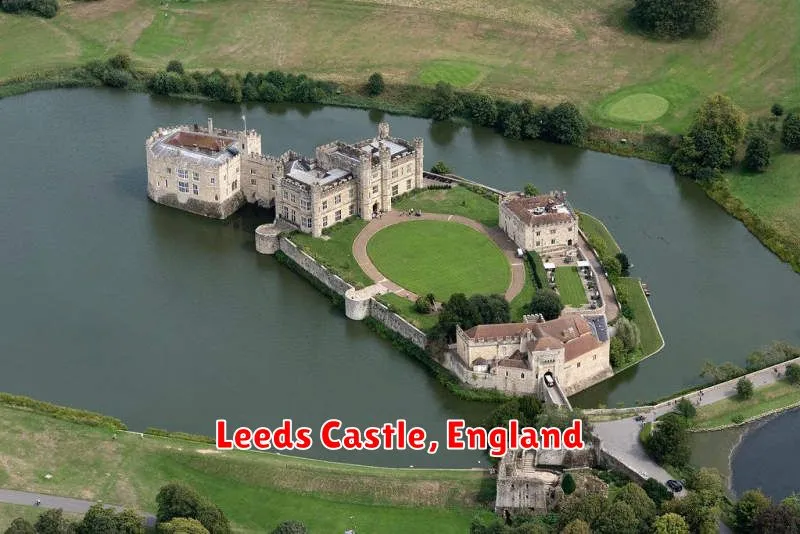
Often called “the loveliest castle in the world,” Leeds Castle boasts a rich history spanning over 900 years. Located in Kent, this majestic castle has been a Norman stronghold, a royal palace, and even a stately home.
Surrounded by a picturesque moat and stunning gardens, Leeds Castle offers visitors a glimpse into the past. Explore the opulent interiors, marvel at the intricate details, and wander through the meticulously maintained grounds.
Key features include the gloriously decorated state rooms, the tranquil Culpeper Garden, and the fascinating aviary.
Stirling Castle, Scotland
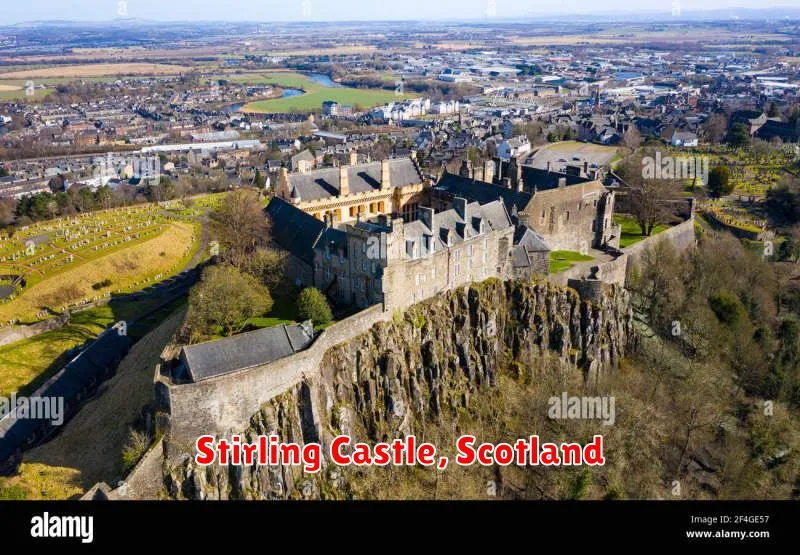
Stirling Castle is one of Scotland’s most historically significant castles, located atop Castle Hill, a strategically important crag. It has served as a royal residence and played a crucial role in numerous Scottish wars, including the Wars of Scottish Independence.
Visitors can explore the grand halls, including the Great Hall, and see the magnificent Stirling Heads, intricate wooden carvings that once adorned the king’s presence chamber. The castle also boasts impressive views of the surrounding landscape.
Its location, overlooking the battlefield of the Battle of Stirling Bridge, makes it an essential destination for anyone interested in Scottish history.
Dover Castle, England
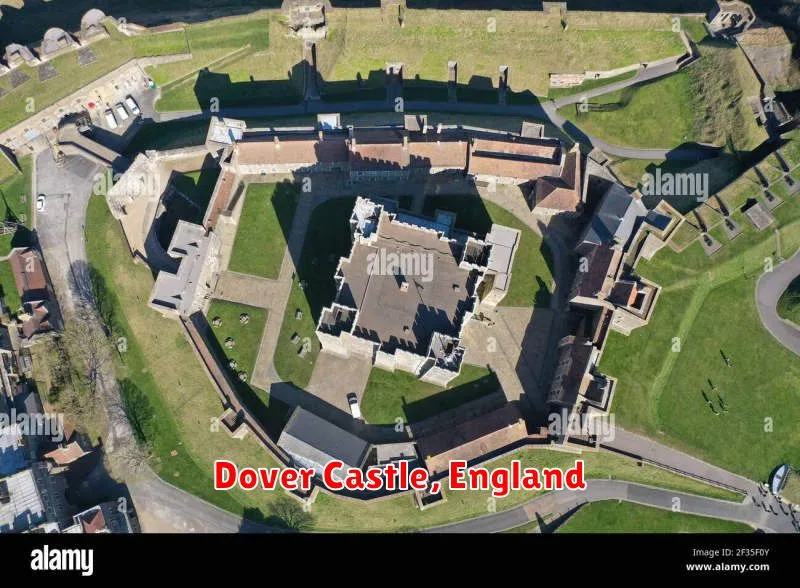
Strategically positioned atop the iconic White Cliffs of Dover, Dover Castle boasts a rich history spanning over nine centuries. This formidable fortress has played a crucial role in England’s defense, serving as a key military stronghold throughout numerous conflicts.
From its Roman lighthouse to its medieval tunnels used during World War II, the castle offers a fascinating glimpse into different eras. Visitors can explore the Great Tower, experience the recreated medieval palace, and descend into the secret wartime tunnels to witness history firsthand.
Dover Castle’s strategic importance and captivating history make it a must-see destination for anyone interested in English heritage and military history.
Conwy Castle, Wales
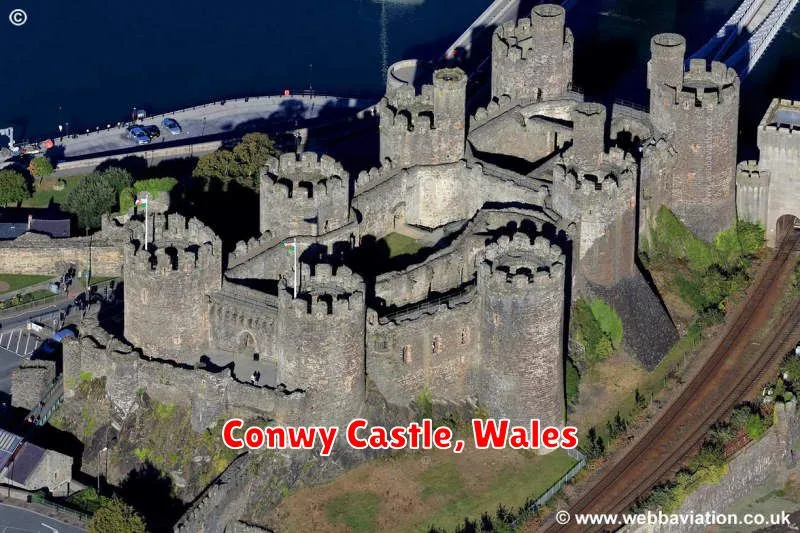
Conwy Castle stands as a masterpiece of medieval military architecture, constructed by Edward I during his conquest of Wales between 1283 and 1289. Its imposing figure dominates the town of Conwy, boasting eight massive towers and a strategically vital location guarding the Conwy estuary.
The castle’s robust defenses and ingenious design made it a formidable stronghold. The walls encircle a spacious inner ward, containing the royal apartments and other essential buildings. Visitors can explore these remarkably well-preserved structures, gaining insights into medieval castle life.
A visit to Conwy Castle offers a compelling journey back in time, allowing you to walk in the footsteps of kings, soldiers, and the people who shaped this remarkable fortress.
Warwick Castle, England
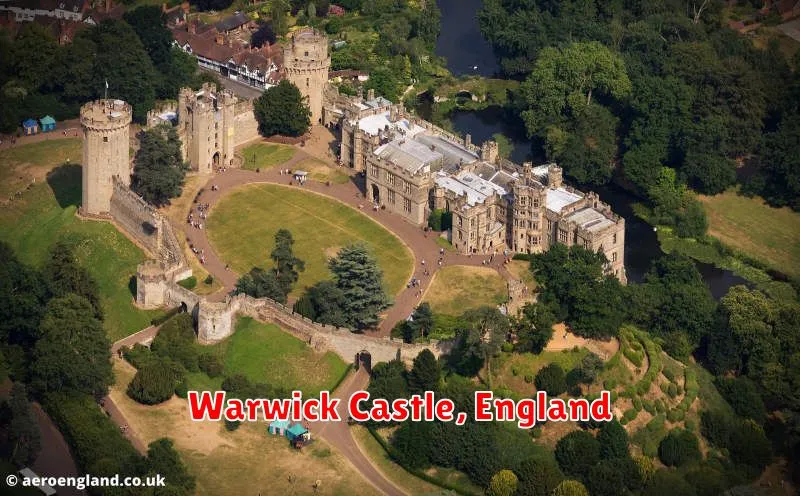
Located in the heart of England, Warwick Castle offers a captivating journey through history. Originally a wooden motte-and-bailey castle built by William the Conqueror in 1068, it was later reconstructed in stone during the 12th century. The castle played a significant strategic role during the Middle Ages.
Visitors can explore the castle’s imposing towers, ramparts, and battlements. Experience interactive exhibits that bring medieval life to life. The castle grounds also feature beautifully manicured gardens, providing a tranquil setting amidst the historical grandeur. Witness thrilling historical reenactments and displays of medieval weaponry.
Warwick Castle offers a comprehensive and engaging experience for history enthusiasts and families alike. Its well-preserved architecture and vibrant historical displays make it a true gem among England’s castles.
Bodiam Castle, England
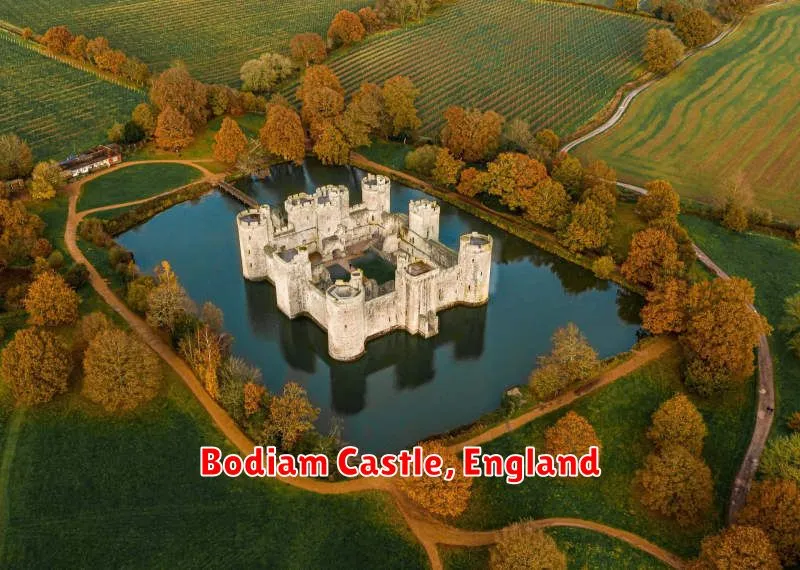
Bodiam Castle, located in East Sussex, is a quintessential example of a medieval moated castle. Built in the late 14th century, its picturesque setting and remarkably well-preserved structure make it a popular destination.
The castle’s classic fairytale appearance, complete with a surrounding moat, towering walls, and imposing gatehouse, transports visitors back in time. While offering a glimpse into medieval defensive architecture, the interior remains largely ruined, allowing for exploration and imagination of its former grandeur.
Key features include the imposing towers, the portcullis, and the remnants of the great hall. Although the interior is not furnished, the layout allows visitors to grasp the scale and functionality of this once formidable fortress.

